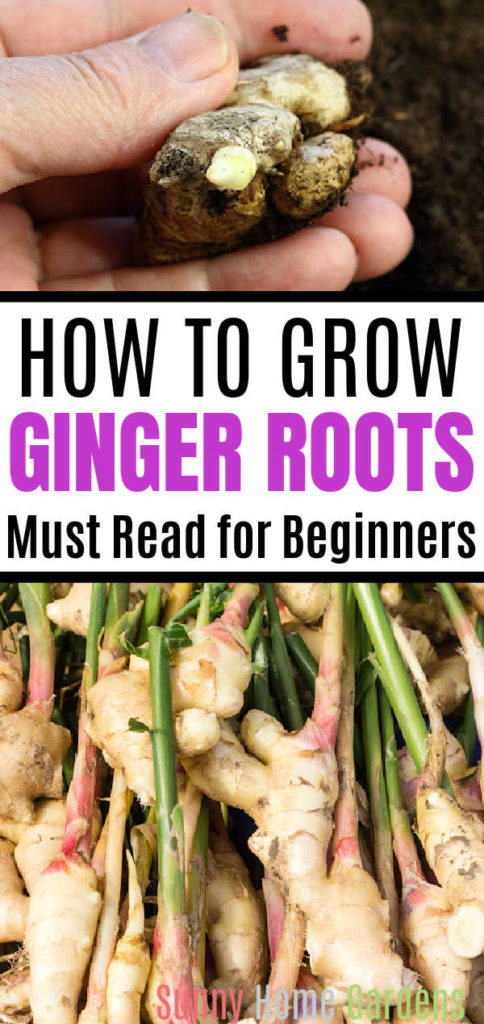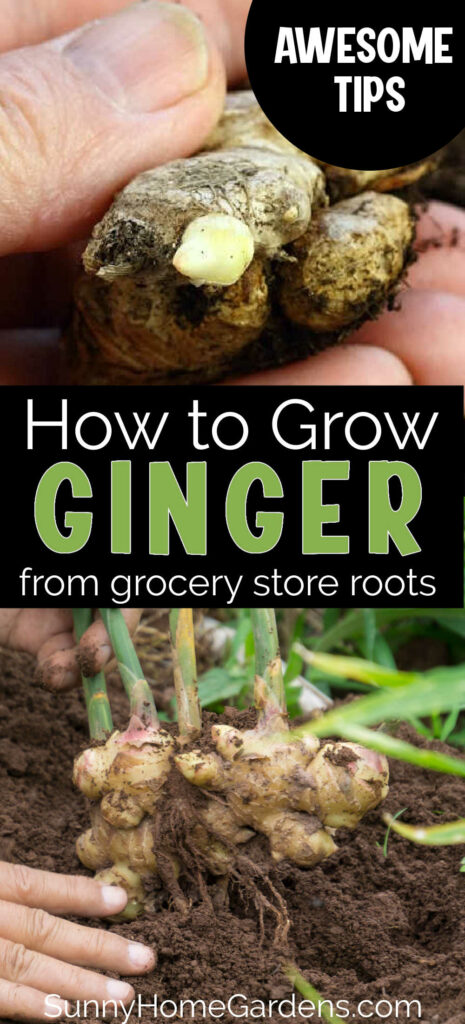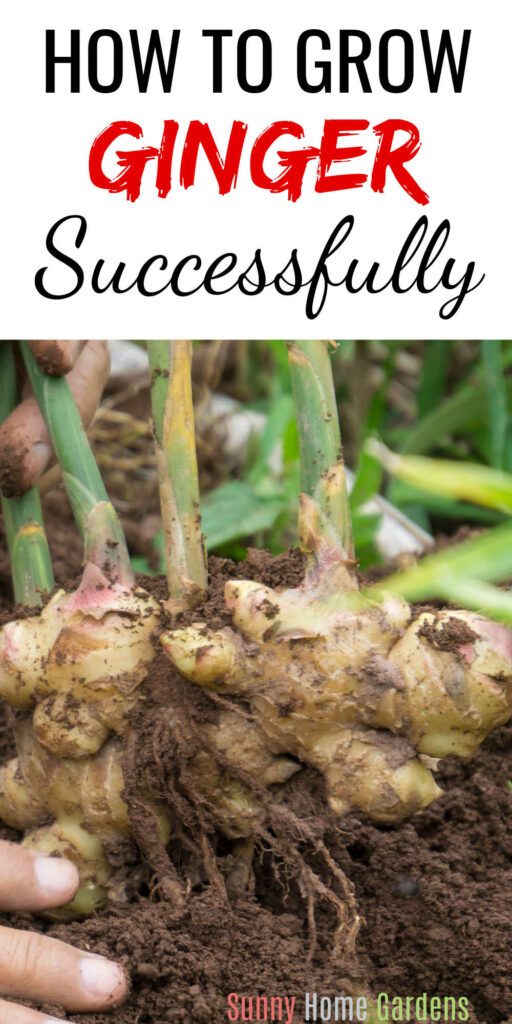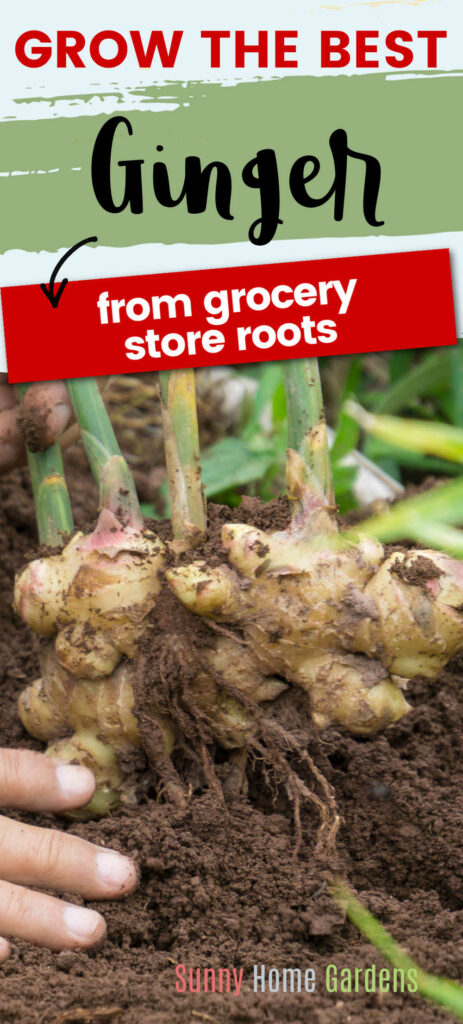You’ll love growing your own ginger at home.
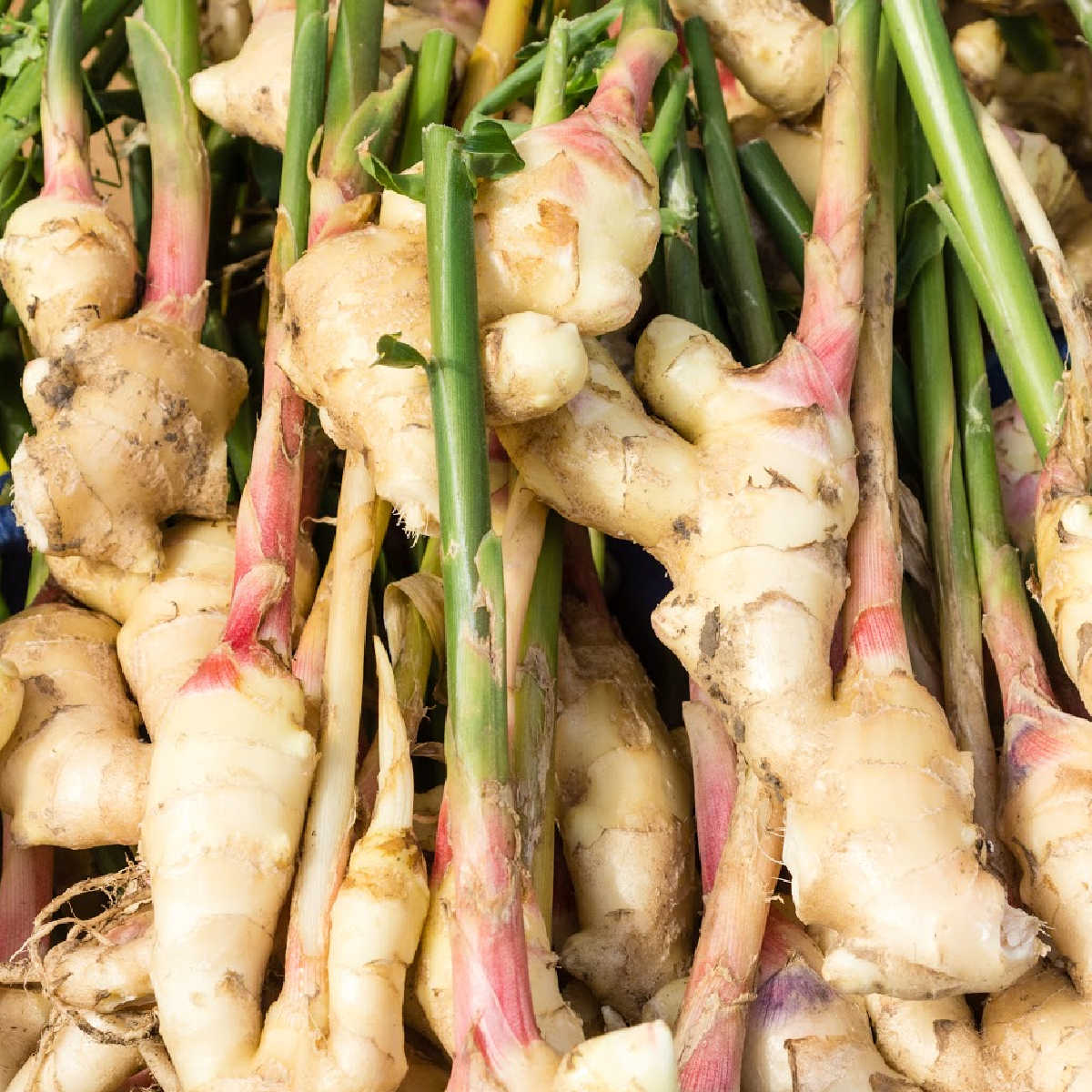
Growing store bought ginger is easy, and anyone can do it at home starting with a simple small piece of fresh ginger.
This simple to grow plant can be very rewarding when it comes to cooking savory dishes, making fresh sweets with a hint of spice, and even making fresh ginger tea.
While this spice may seem exotic it grows fairly easily as long as it is given rich fertile soil and plenty of water.
Table of Contents
WHERE TO BUY GINGER ROOT TO GROW?
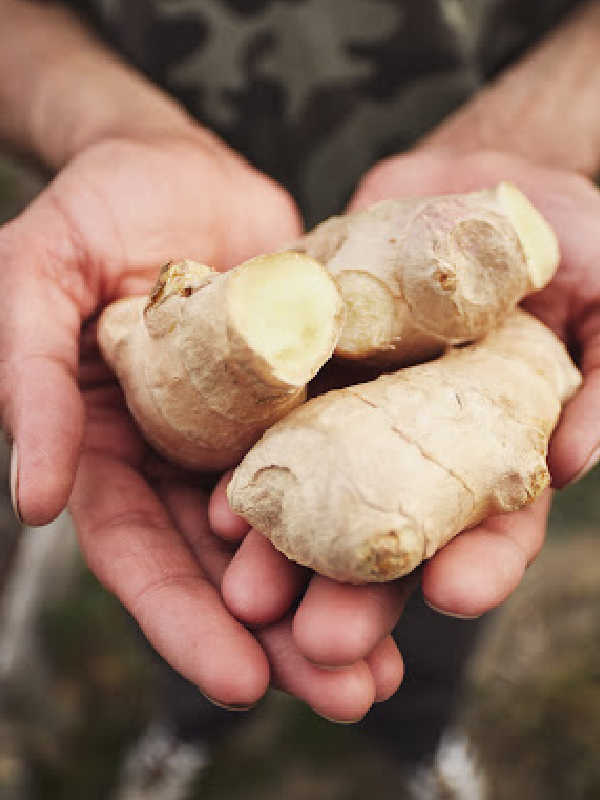
You can use ginger root from the grocery store as your seed ginger.
You do need to be mindful as grocery store ginger is generally treated. The farmers market is likely your best bet, although you should still be cautious and don’t be afraid to ask the farmer if the root has been treated to stop growth.
If you plan to use your ginger for its health qualities you should use organic ginger to ensure you are not adding unnecessary chemicals to a problem like nausea that could make issues worse.
CHOOSING THE GINGER ROOT OR RHIZOME TO GROW
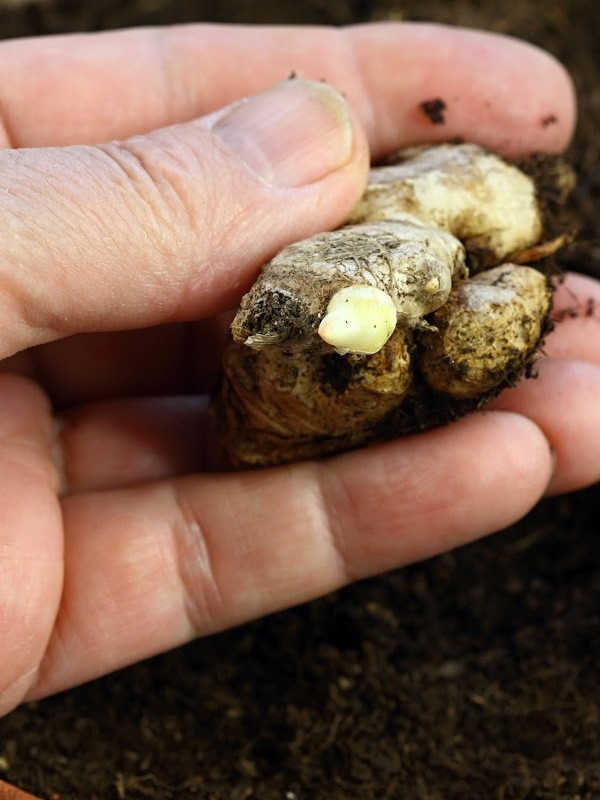
Unlike most other plants ginger is grown from a pit of the root.
The root of a ginger plant is called a rhizome and is the same part of the plant we eat and use for its medicinal properties.
To propagate your own ginger plant from a ginger root you find at the store you need a small yet plump chunk at least 1 inch long.
This should be firm and from a fresh ginger root. If it has softened it is not fresh and is more likely to rot than grow.
Also check to make sure that your piece of ginger root has at least one nubby point on it.
HOW TO PLANT GINGER
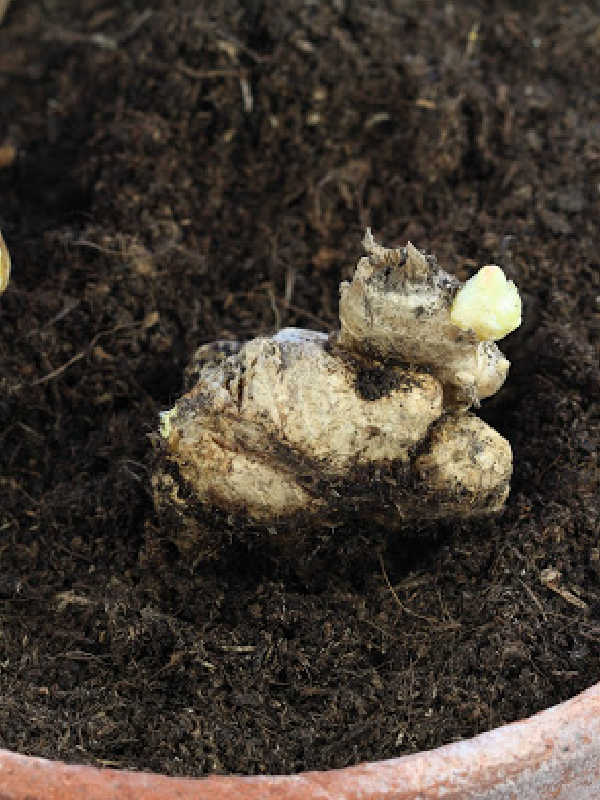
Let’s get into the actual planting and growing ginger root
Before planting ginger, make sure to soak the root chunk overnight in clean, room temperature water. This will allow the root to suck up as much water as it needs to start the growing process.
Plant ginger root with the nubby bit pointing upwards.
Even if you plan to grow your ginger in the ground, it is best started in a pot using well-draining potting soil with plenty of peat moss and compost mixed in.
This will give your ginger root the nutrition it needs while providing just the right amount of drainage.
Gently moisten the soil daily. This can be done with a spray bottle filled with clean water. This allows you to spread the water evenly, keeping the soil moist but not soaking it.
Keep moistening the soil daily while you wait for a ginger plant to sprout. This process takes patience as it requires 6 to 8 weeks for your spout to make its way out. This process is well worth the wait to have your very own ginger plants in your home or garden providing you with the freshest ginger possible.
Anyone can grow ginger in a pot, bringing it inside during the winter to protect it. Ginger will go dormant in the late fall so you do not need to worry about providing it with a grow light but simply bring it inside and put it in an out of the way place. The basement where the temperature remains above freezing is the perfect place to store your potted ginger plant over the winter.
Be mindful when choosing your pot for your new plant’s permanent home that ginger grows wide rather than deeply so you will want a large pot but it does not have to be a very deep one. This will likely be the only pot your plant will ever need due to harvesting.
If you live in a warm climate – between zones 7 and 10 you can grow ginger in your everyday garden or flower bed. Seeing ginger is a perennial you want to ensure that it has a space of its own so you will not disturb it while adding other plants or disturb other perennials while harvesting your ginger. Before planting in the ground add plenty of organic matter including fresh compost to help feed your ginger.
After your ginger plant has become well established you want to keep it well watered and fertilized. Ginger is known for being a heavy feeder and very demanding of freshwater.
The best time to prune your ginger is during its dormant period between late fall and early spring. This will help the rhizome develop a new set of leaves as well as roots by the next growing season.
HARVESTING GINGER
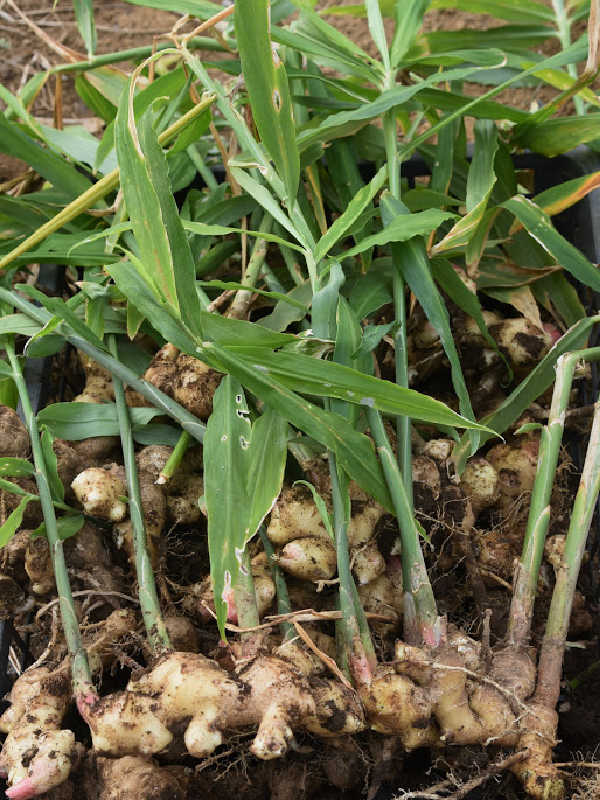
Ginger is one of those great plants that can be harvested at any time. I suggest you follow the 1/3 rule when harvesting ginger roots and never take more than one-third of the plant in a harvest.
This helps to ensure that your plant has enough remaining to continue to grow without going into shock.
To harvest your ginger, grab the plant at the base and gently pull it up. This will remove the plant and rhizome from the soil. Gently break off the amount of ginger you wish to harvest and replant the ginger plant back in the soil.
This is a great time to mix in fresh compost if it has been a few months.
Make sure to “PIN IT” for later and follow Sunny Home Gardens on Pinterest for all the latest posts about plants!
